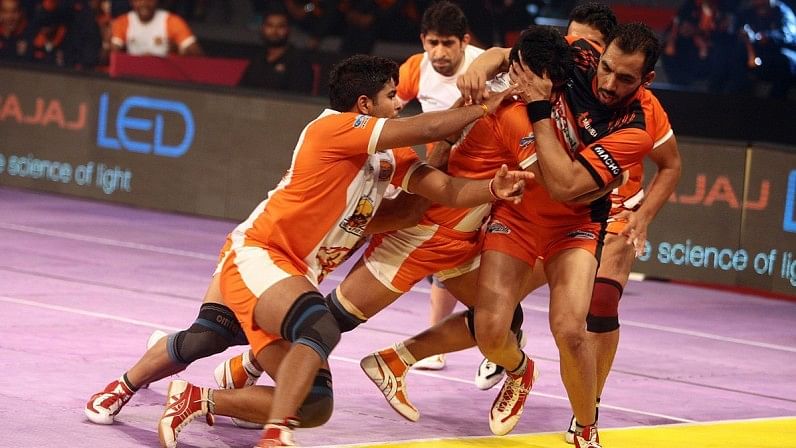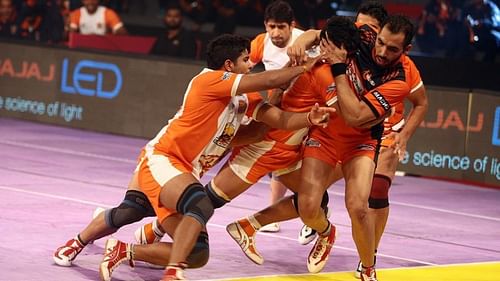
What are 'kabaddi knees'? Everything you need to know about knee injuries in kabaddi

Kabaddi has been speculated to have originated in prehistoric times; it was played for physical exercise by pupils in Indian Gurukuls (Vedic schools run by gurus). Though minor variations have emerged in the centuries since, the game’s principal objective of raiding the enemy territory has remained constant.
Now the times have changed, and kabaddi has emerged as a professional sport played right from the rural districts of India to the international level. However, the individuals participating in the sport have been suffering more than their fair share of injuries, and that is a major cause for concern.
Sen et. al. (2003) demonstrated the prevalence of injury among Indian school children who play sports. It was found that the knee is the most injury prone site, followed by the ankle. The knee is the body part which is directly involved in nearly every game, and particularly so in kabaddi.
Ms. Chaitra Khanvilkar, a former kabaddi player who represented her college in kabaddi nationals for 4 years from 2000 to 2004, has been quoted as saying in an interview: “I've got kabaddi knees. I left kabaddi because both my knees got injured badly.
“When we used to play, there was muddy playing surface and no medical support. For the whole team there was just one pain relieving spray which helped us relieve the muscle pain, and we used to go ahead and finish off the match.
“The reason the knee got injured so often was because I was a defender and used to be at the corner position and whenever I had to stop a raider, I had to be in a partially squatting position and then stop or hold on to the raider, or rapidly sit and get up. This caused a lot of pressure on my knees. Once the knee pain started it also affected my leg movements and playing fitness.”
With so many other players facing similar circumstances, it is necessary to take important steps towards curbing knee damage.
Factors for knee injuries:
-
Hypermobile joints.
-
Weak core control and low hip strength.
-
Playing on uneven surfaces (with evolving times professional kabaddi games are now conducted on mats, but even now there are district level school matches where young kabaddi players compete on uneven muddy surfaces. By the time a player would be chosen to train professionally he may have incurred knee stress/ injury at least once or twice).
-
Inadequate first aid availability during matches.
-
Lack of awareness to deal with knee injuries (since the sport is played more in rural parts of the India).
-
Playing with improper shoes (in earlier days kabaddi was played bare foot and on muddy surfaces, as told by Ms Khanvilkar).
How to deal with a knee injury:
-
In case of a direct hit, crush injury or contusion, check for knee mobility and signs of severe pain. If the player is not able to straighten the knee or put weight on the leg, then let him rest, but if it’s a minor injury just use a magic spray and provide a knee support. A detailed evaluation can be performed later.
-
In case of a ligament sprain/ muscle strain, the player could experience a severe cramp or an unstable feeling in the knee. In case of a mild strain or sprain, a magic spray works wonders by reducing the pain and allowing the player to finish off the match.
Healing time for a knee injury:
This varies depending on the type of injury. Here's the estimated healing duration for the different kinds of knee injuries suffered by kabaddi players:
-
Muscle contusion: 3-7 Days
-
Mild sprain or strain: 0-7 Days
-
Moderate sprain or strain: 2-3 Weeks
-
Severe sprain or strain: 4-6 Weeks
-
Joint / bone injury: 6-8 Weeks
General preventive solutions for knee injuries:
-
An ice bath after a match for 2-3 minutes does wonders in body recovery.
-
During pre-season training, an aquatic rehab program helps with easier and faster recovery.
-
Preventive strapping of the knee for a suspected player could prevent an extended injury layoff.
-
The right kind of shoes with good grip and braking ability help in easier and faster movement, thereby minimizing the chance of injury.
-
Periodization of the training schedule for kabaddi, just like all other sports, is a must.
-
Coaches should encourage players to get their injuries treated completely before stepping on the field again.
Kabaddi is a physically demanding sport, and many players have fallen victim to its intensity. But by taking adequate safeguards, the most injury-prone part of the body – the knees – can be saved from grievous harm.